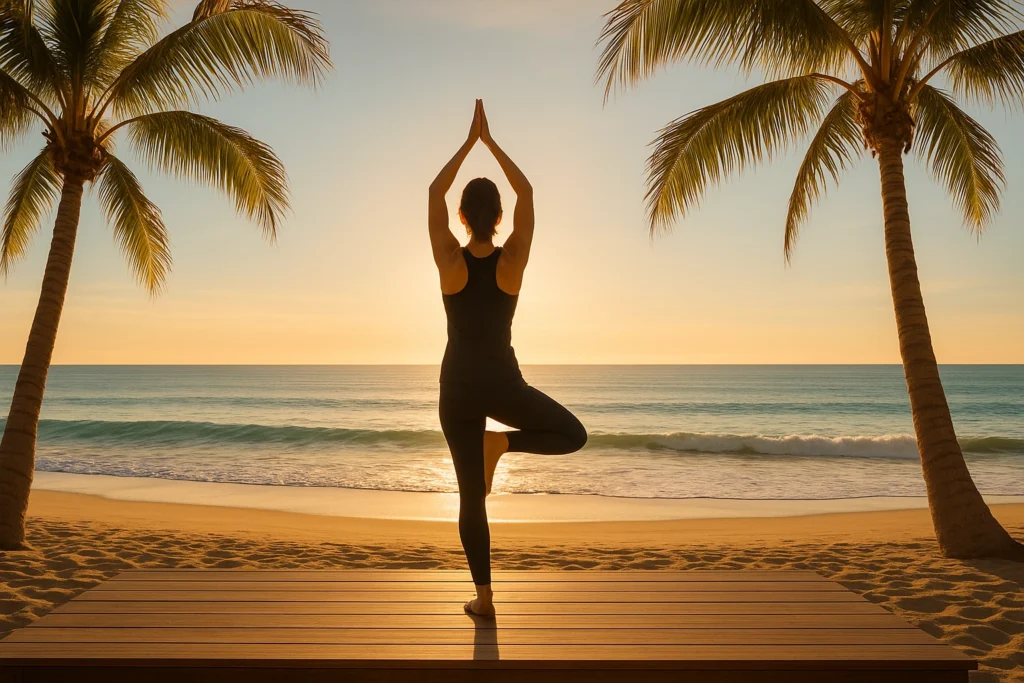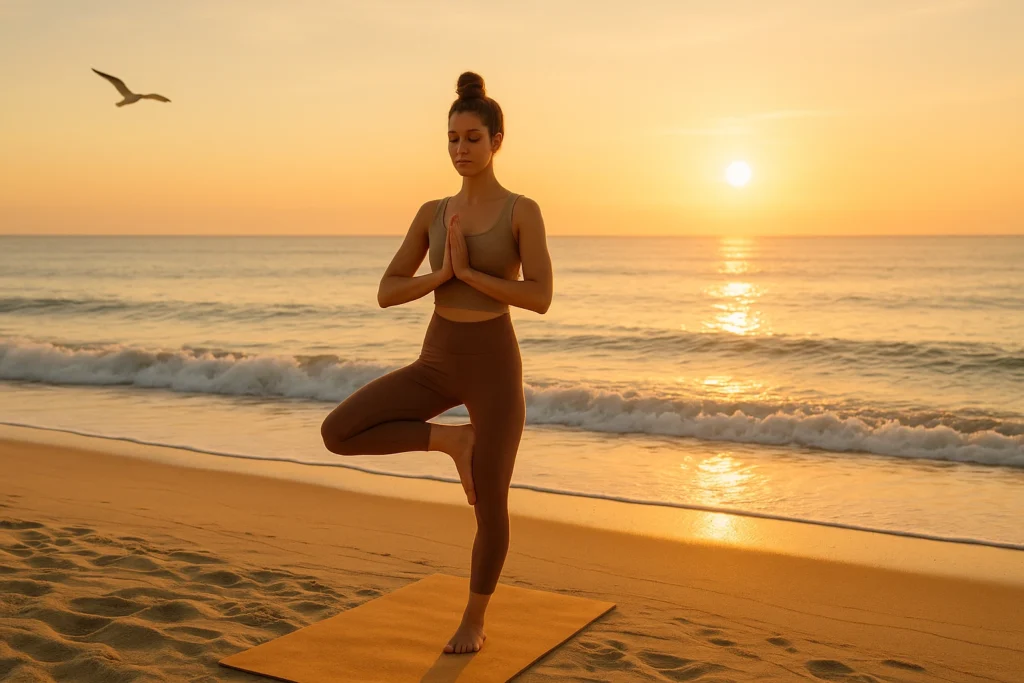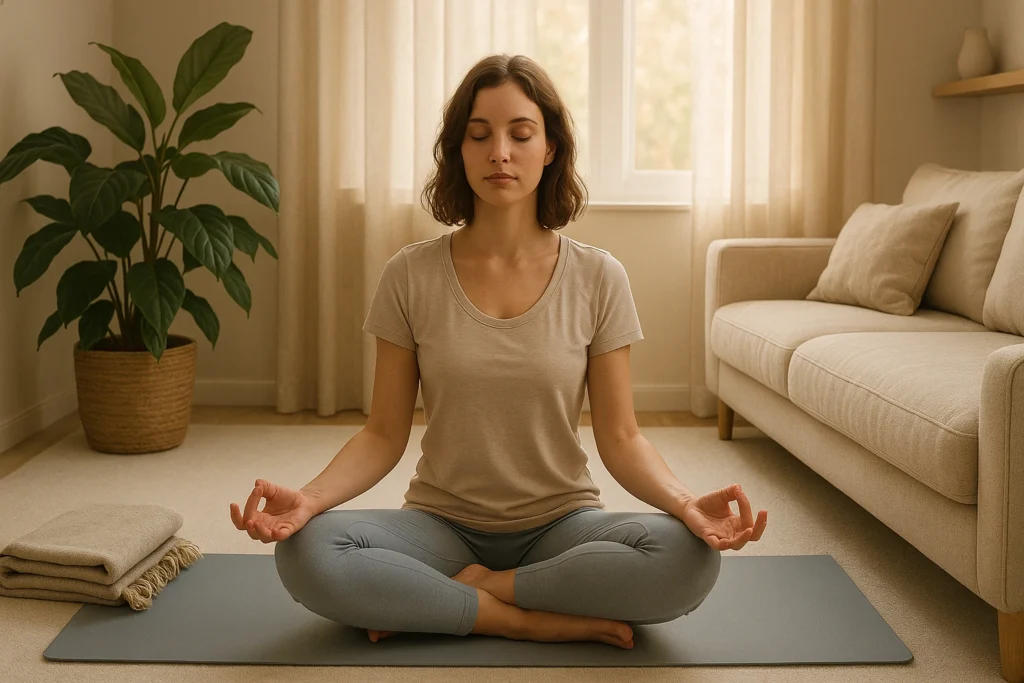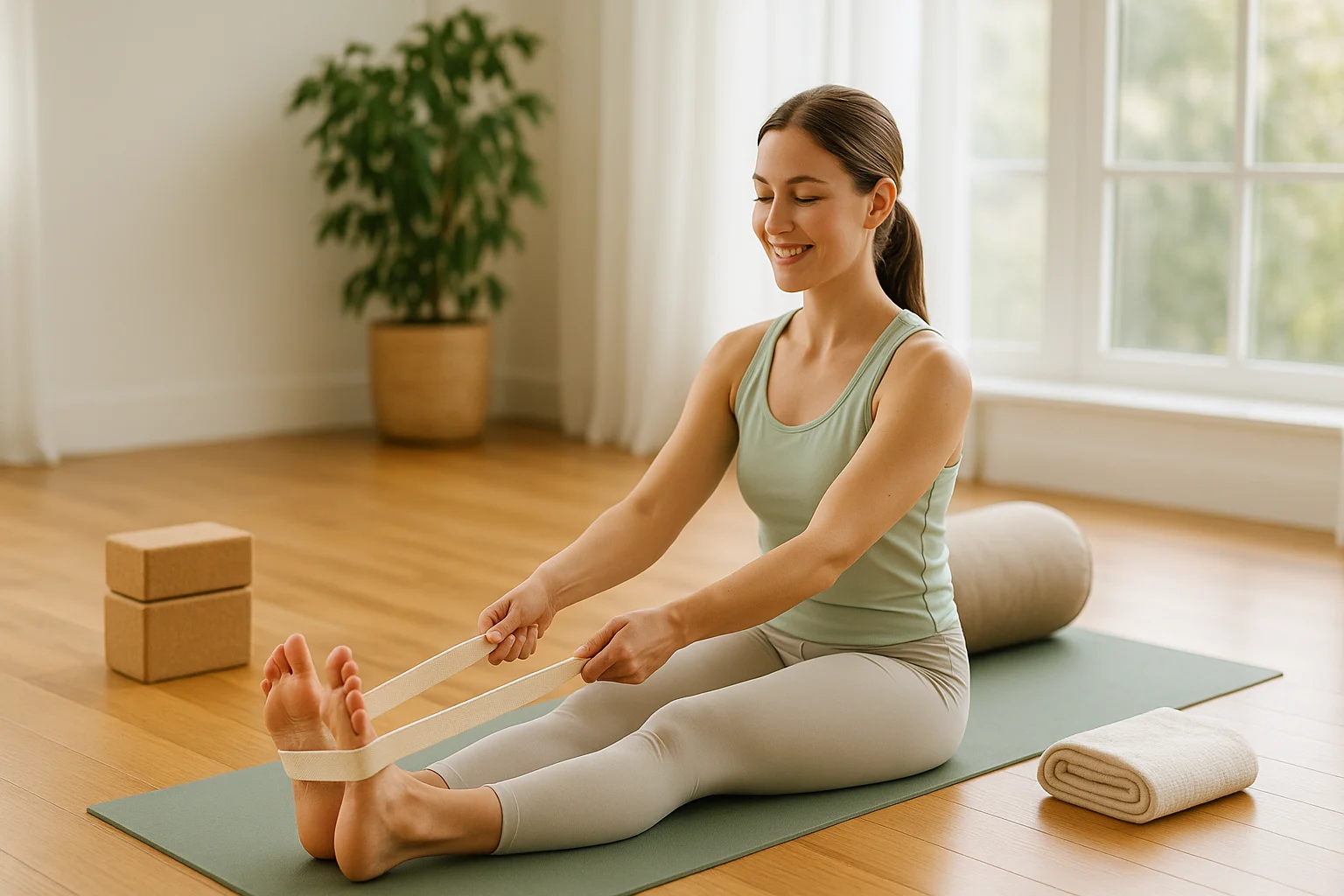
Struggling to touch your toes? This yoga flexibility guide walks you through the gear that helps you ease into deeper, safer stretches. Picture moving more freely—less stiffness, more comfort. From mats to straps, we’ll look at how a few simple tools can change your practice and make flexibility feel doable (and even fun).
Meet Sarah. Six weeks ago she couldn’t reach her shins; now, with a strap and two blocks, she folds forward without straining. Balancing stretch and strength helps your body feel both supple and steady. Let’s dive in.
Discover Your Perfect Yoga Gear!Table of Contents
- Why Props Matter
- The Foundation: Your Yoga Mat
- Extending Your Reach: Yoga Straps
- Bringing the Ground Closer: Yoga Blocks
- Supported Rest: Yoga Bolsters
- Beyond the Basics: Optional Accessories
- Your Flexibility Readiness Check
- Build a Flexible Routine
- Setting Up Your Home Yoga Space
- Safety and Best Practices
- Gear for Specific Needs
- Frequently Asked Questions
- Conclusion
Why Yoga Gear Matters in Your Yoga Flexibility Guide
Starting when you feel tight can be intimidating, but your gear is more than “extra”—it’s a training partner. Mats, straps, and blocks help you get into poses safely, line things up, and stretch a little deeper. For tight hamstrings, try our yoga hamstring stretches.
That’s why this guide highlights props that support your progress step by step.
Props Aren’t Cheating—They’re Support
Worried props are “cheating”? Think of them as training wheels—useful while you learn balance and control. In a forward fold, a strap brings your feet “closer” so you can keep the spine long and feel the stretch in the hamstrings (not your lower back).
Alignment and Deeper Stretches
Good alignment is key to stretching safely, and props help you hit the right muscles every time. For example, blocks in Triangle Pose keep your spine long, directing the stretch to your hamstrings and side body. Well-aligned poses may help you build flexibility over time by engaging connective tissues more effectively. For a clear overview of alignment basics, see Yoga Journal. To complement this, a yoga sequence for core strength can stabilize your poses further.
Injury Prevention
Forcing a stretch risks pulls or strains. Props reduce this risk by supporting gradual progression. A block under your hand in a lunge prevents hip strain, while a strap in a shoulder stretch avoids overextension. This safety net lets you explore your limits confidently.
This post has affiliate links. We may earn a commission. Learn more.
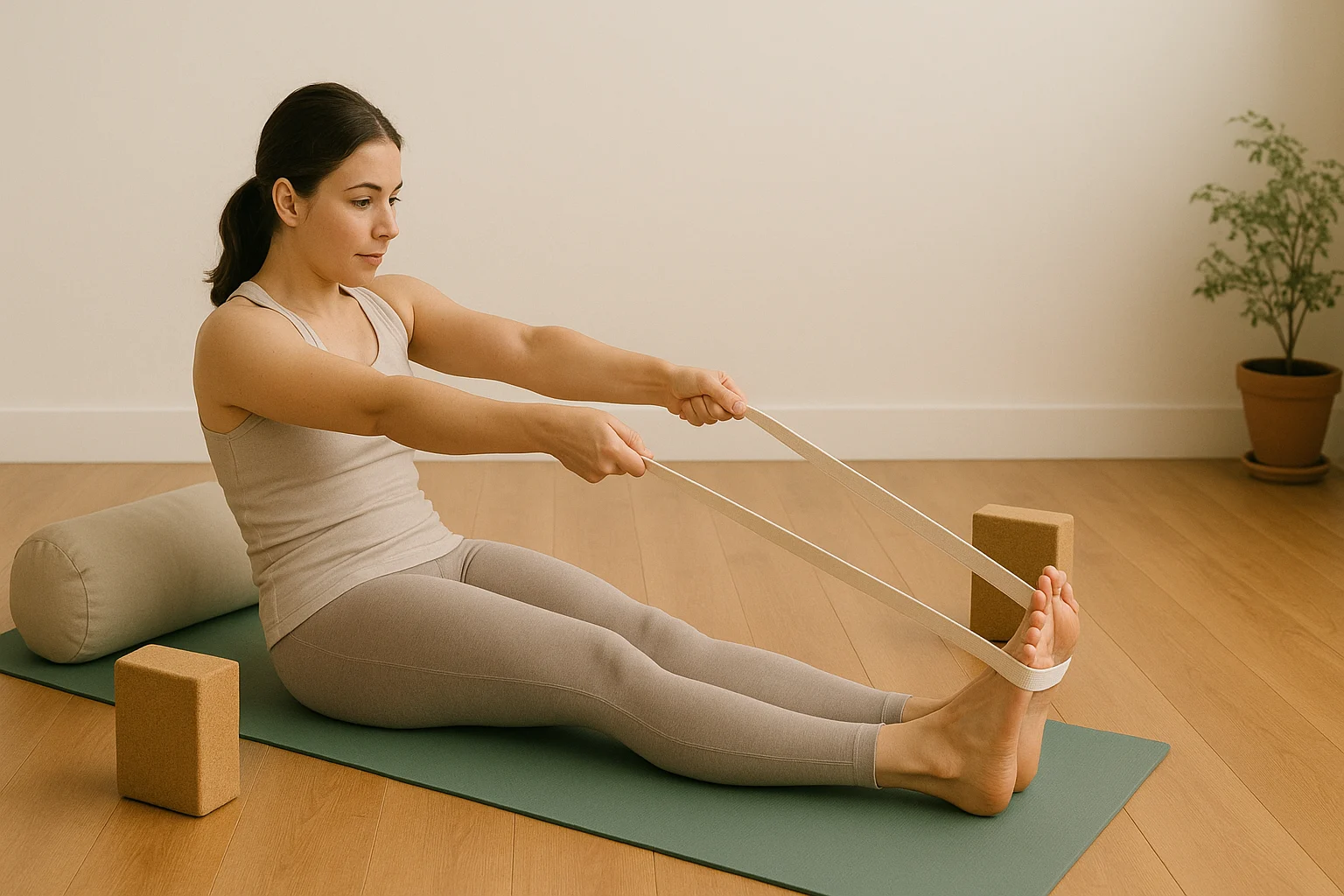
The Foundation: Your Yoga Mat
Your yoga mat is your practice’s cornerstone, providing grip, cushioning, and a defined space. Choosing the right one is vital for your path to greater flexibility, ensuring stability during balance poses and comfort in long stretches.
Choosing the right mat is one of the cornerstones of this guide, ensuring you build a strong foundation.
Why a Good Mat Matters
A quality mat prevents slips, cushions joints, and creates focus. Without grip, you’ll struggle to hold poses like Downward Dog, disrupting your flexibility work. A cushioned mat lets you linger in Pigeon Pose, deepening hip stretches comfortably.
Best Yoga Mats for Flexibility: Materials and Thickness
| Material | Pros | Cons | Best For |
|---|---|---|---|
| PVC | Affordable, durable, great grip when dry | Not eco-friendly, may smell initially | Budget-conscious beginners |
| TPE | Eco-friendly, lightweight, soft | Less durable | Restorative flexibility |
| Natural Rubber | Superior grip, eco-friendly, durable | Heavier, possible latex allergy | Sweaty practices |
| Cork | Antimicrobial, grippy when wet | Less cushioned | Hot yoga flexibility |
Thickness: Go 1/8 in (3–4 mm) for stability in flows, or 1/4 in (6 mm) if your joints like more cushion. Sweat a lot? Add a yoga towel for extra grip.
Mat Care Tips
- Wipe down with mild soap after practice.
- Let it air-dry completely to avoid odors.
- Roll it tight and keep it out of direct sun.
Extending Your Reach: Yoga Straps
Yoga straps are a quiet MVP for beginners chasing flexibility. They extend your reach so tight hamstrings or shoulders don’t hold you back. Learn more about their benefits in our yoga strap for flexibility guide.
How Straps Boost Flexibility
Straps literally bridge the gap between hands and feet. In a seated forward fold, the strap lets you keep the spine long so the stretch lands where you want it—the hamstrings.
Yoga Strap Poses for Flexibility
- Reclined Hand-to-Big-Toe Pose: Lie on your back, loop a strap around one foot, and extend the leg toward the ceiling. Gently pull to stretch hamstrings. Keep the opposite leg flat or slightly bent for tight hips.
- Seated Forward Fold: Sit with legs extended, strap around both feet. Pull gently, keeping your back straight, to deepen the hamstring stretch.
- Cow Face Pose (Arms): Hold the strap behind your back with one hand up, one down. Walk hands closer to open shoulders.
Choosing a Strap
Choose an 8-foot cotton D-ring strap; taller people or tighter shoulders may prefer 10 feet. Nylon lasts, but cotton grips better.
Bringing the Ground Closer: Yoga Blocks
Yoga blocks raise the floor so poses meet you where you are. They’re clutch for aligned, comfortable stretching in your flexibility work.
Blocks for Alignment and Flexibility
Blocks support proper form, like elevating your hands in Triangle Pose to keep your chest open. They also deepen stretches by providing a stable base, such as under your forearms in Lizard Pose for hip opening. For wrist support during poses, check out our yoga wrist stretches to enhance mobility.
Block Materials
| Material | Pros | Cons | Best For |
|---|---|---|---|
| Foam | Lightweight, soft, affordable | Less stable, less durable | Beginners, restorative |
| Cork | Firm, stable, eco-friendly | Heavier, pricier | Dynamic poses |
| Wood | Durable, very stable | Heavy, hard surface | Advanced stability |
Using Blocks for Flexibility
- Standing Forward Fold: Place two blocks (tall or medium height) in front of your feet. Rest hands on blocks to keep your spine long, targeting hamstrings.
- Lizard Pose: Place blocks under forearms to support your weight, allowing a deeper hip stretch.
- Supported Bridge: Lift hips, slide a block under your sacrum (lowest height). Rest for a gentle backbend, opening hip flexors.
Supported Rest: Yoga Bolsters
Bolsters add comfort, especially in restorative shapes. They invite passive stretching and deep relaxation so your body can let go and settle. Great for opening hips, chest, and spine without strain.
Benefits of Bolsters
With a bolster, you can relax and let gravity do the work—hips, chest, and spine can open with less effort during longer holds.
That’s why this guide recommends bolsters for anyone aiming for restorative improvement.
Types of Bolsters
- Round: Great for backbends (e.g., Supported Fish Pose).
- Flat: Stable for seated poses or hip elevation.
- Pranayama: Thin, for chest-opening breathing exercises.
Bolster Poses for Flexibility
- Supported Fish Pose: Place a round bolster along your spine, lie back, and let your chest open for 5-10 minutes.
- Supine Bound Angle: Recline over a bolster, soles together, knees out. Add blocks under thighs for tight hips.
- Pigeon Pose: Rest your torso on a bolster to relax into a deep hip stretch. For more hip-focused poses, try our yoga for glutes workout.
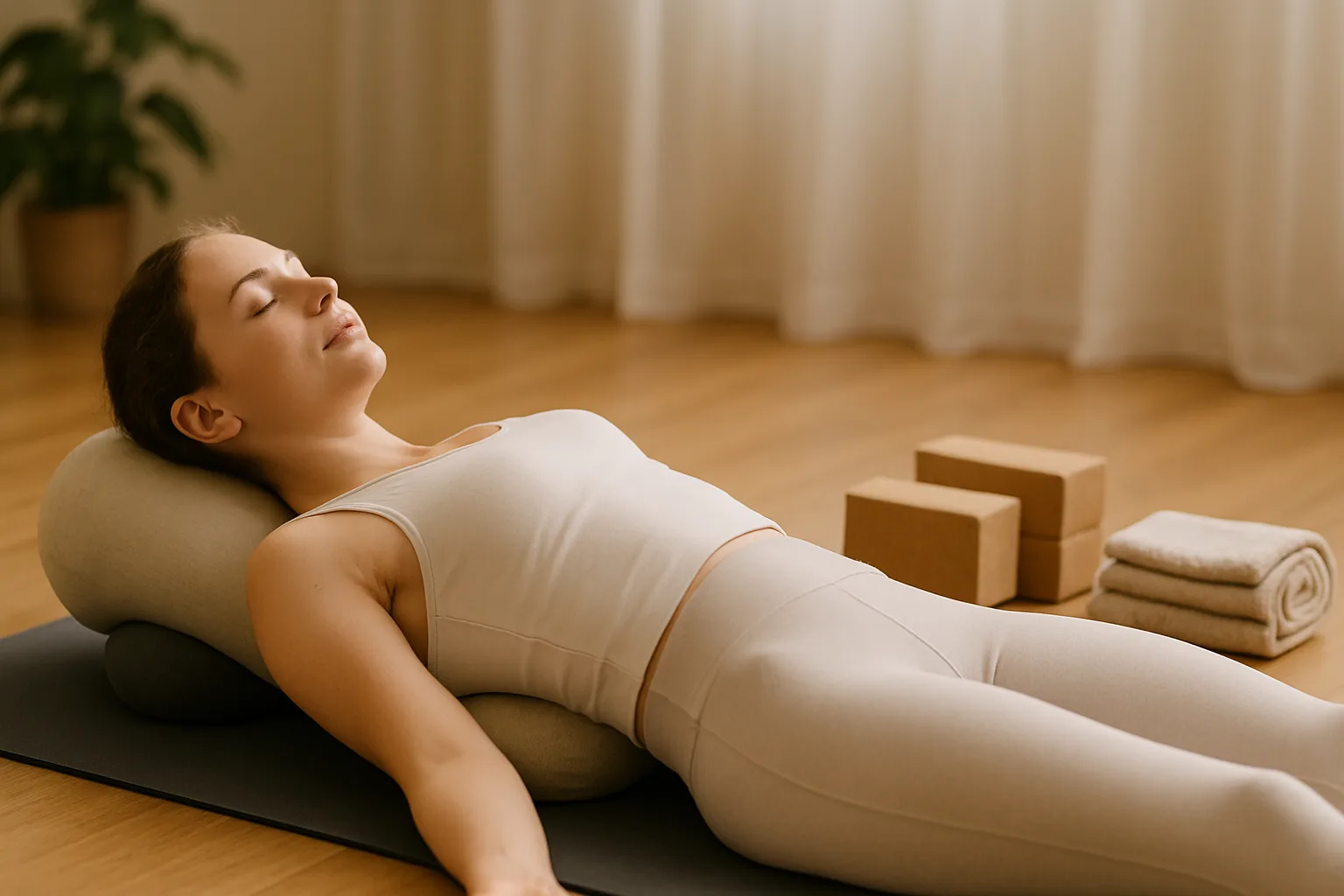
Beyond the Basics: Optional Accessories
Once the basics feel solid, these add-ons can round out your flexibility toolkit.
Yoga Towel
Perfect for sweaty practices, towels absorb moisture and add grip. They’re a must for hot yoga flexibility sessions.
Yoga Wheel
A wheel can deepen backbends and massage the spine, supporting spinal mobility and core engagement.
Yoga Blanket
Folded blankets cushion knees or elevate hips, making seated stretches more comfortable.
Resistance Bands
Bands add controlled resistance, improving active flexibility in hips and shoulders.
For a deeper dive into how props like these fit together, continue through this comprehensive yoga stretching guide.
Your Flexibility Readiness Check
Unsure which gear fits your needs? This quick quiz helps you find the perfect yoga props for your flexibility journey!
Your Personalized Recommendations ✨
Building a Flexible Practice with Yoga Strength Training
Before you start, it helps to see how props fit into a long-term mobility plan. You don’t need marathon sessions—short, focused flexibility workouts with your mat or blocks can move the needle. Ten minutes a day on hips or shoulders adds up. Breathe steadily to relax into stretches. Start simple and nudge the intensity up as your body adapts so you make progress without overdoing it.
Now that you’ve got your yoga props for stretching, this step-by-step yoga guide will help you put them into practice daily. With consistent effort, gentle yoga sequences for flexibility can unlock deeper movement while keeping you safe with props. Consistency is key—short sessions work wonders!
Flexible Body Yoga: Sample Routine
- Morning (10 min): Reclined Hand-to-Big-Toe Pose with a strap to wake up hamstrings. Sit on a block for a seated forward fold.
- Mid-Day (15 min): Counteract sitting with blocks in Standing Forward Fold and a bolster for a supported backbend.
- Evening (20 min): Relax with a bolster in Supine Bound Angle and a blanket under your head for Savasana.
Strength and Flexibility Synergy
Pair flexibility with yoga strength training to round out your practice. Many people mix in strength yoga practices to build endurance and mobility together. Blocks can steady you in load-bearing shapes. Aim for 1–2 strength-focused sessions each week to support joint stability.
Progressing with Props
Start with props for alignment and comfort. As you open up, lower the blocks or shorten the strap. Even advanced yogis lean on props for deeper work or rest days—don’t ditch them too soon.
Setting Up Your Home Yoga Space
A dedicated space boosts consistency in your practice for better flexibility. Here’s how to create one.
Why a Space Matters
A clutter-free area signals “practice time,” reducing distractions and enhancing focus for deeper stretches.
Storage Solutions
- Mats: Roll tightly with a strap or store in a basket.
- Blocks/Straps: Stack in a crate or on a shelf.
- Bolsters: Slide under furniture or use as a decorative cushion.
Creating a Calming Atmosphere
Use soft lighting, calming scents (like lavender), and plants to make your space inviting. A warm room may help muscles relax and support flexibility.
If you’re just starting out or prefer minimal gear, a simple home practice can still yield great results. Check out our Yoga at Home No Equipment: Beginner Routine for 2025 to build flexibility with just your body and a small space.
A well-designed space, as outlined in this guide, sets the stage for consistent and effective stretching sessions.
Safety and Best Practices
Even the best yoga gear only helps if you know how to use it wisely. Follow these tips to stay safe. If you’re combining yoga with strength training—often called yoga strength training—our yoga for weight training guide offers tips to help prevent injuries and support recovery.
Listen to Your Body
Avoid sharp pain—healthy stretches feel intense but not tearing. Breathe deeply to guide your stretch.
Don’t Force Stretches
Forcing tightens muscles. Use props to gently persuade, not push, your body into deeper stretches.
Alignment Matters
Use blocks and straps to maintain form, like keeping your spine long in forward folds. Consult a teacher for personalized alignment tips.
Warm up first: 5–10 minutes of Cat-Cow or gentle dynamic moves boosts blood flow so straps and blocks work better. Clean your mat and blocks regularly, especially in shared spaces. If you lift or run, our complete yoga guide complements recovery-focused practices to ease muscle tension.
Gear for Specific Needs
Tailor your yoga props for stretching to specific conditions:
- Lower Back Pain: Use a bolster for Supported Bridge to relieve tension.
- Tight Hips: Blocks under thighs in Supine Bound Angle open hips gently.
- Pregnancy: A chair for supported forward folds ensures safety and comfort.
Frequently Asked Questions
We’ve included this FAQ to answer common beginner questions about starting your flexibility journey.
Conclusion: Embrace Your Yoga Flexibility Journey
This guide is your roadmap to flexible body yoga—transforming stiffness into fluid movement with the right tools and dedication. Mats, straps, blocks, and bolsters can make poses more accessible, support sound alignment, and encourage deeper relaxation. Like Sarah, you can progress from tight to confident with consistent practice. Embrace these tools, listen to your body, and enjoy the journey to a more flexible you!
